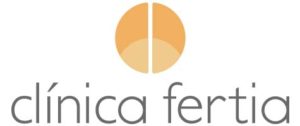Fertilechip – DNA fragmentation and sperm selection

Depending on the cause, DNA fragmentation can be single-stranded or double-stranded. There are studies that associate double-chain fragmentation with couples who have repeated miscarriages, unachievable pregnancy, or poor embryonic quality.
Indications
Couples who have suffered repeated miscarriages.
Couples with several failed cycles of in-vitro Fertilisation.
Slow embryonic development or low embryo quality.
How does the Fertilechip device work?
For this technique, the semen is manipulated without the need to be previously centrifuged, thus reducing oxidative damage in the sample, compared to the usual techniques of selection. This sperm selection technique is based on microfluidic technology.
Although this technique allows us a better selection, its use is not recommended in frozen semen samples or in cases of low sperm count.

Frequently asked questions about reproduction treatments
If you would like more information about our treatments, we are always available to help and answer any of your questions.
How long do I have to wait to start treatment?
How many attempts can I make?
In the case of artificial insemination, here at the clinic we recommend a maximum of four attempts, since 90% of pregnancies occur in the first four cycles.
Regarding In-vitro fertilisation or microinjection, our clinic never makes more than four attempts using these techniques.
In the case of egg donation, it is more difficult to establish a limit, this will normally be determined by psychological and also economic factors.
Can you use these techniques when you have already entered menopause?
In these cases, the reception of eggs from a donor must be used.
What are the biggest concerns of egg or sperm recipient couples?
Another factor that concerns a couple is the health of the donors and the physical resemblance to them.
In our centre, both in the case of sperm donors and egg donors, our goal is to seek that the physical resemblance is as similar as possible to the parents.
Are these treatments expensive?
Clínica Fertia is a pioneer in maintaining an honest and transparent policy. Since 2002 we have published the information of the cost of our treatments on our website.
